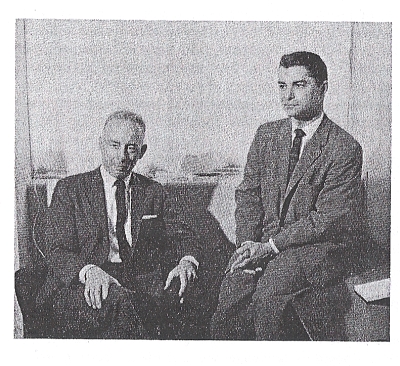654 Nathan Rochester
|
us Nathaniel Rochester (S'41-A'43-M'46-SM'49-F'58) was born in New York, N. Y., on January 14, 1919. He attended Massachusetts Institute of Technology, Cambridge, and received the B.S. degree in electrical engineering in 1941. After three years in the Radio Frequency Components Group of the M.I.T. Radiation Laboratory, he joined Sylvania Electric Products, Inc., where he was responsible for the design and construction of radar sets and other military equipment. His group built the arithmetic element for the Whirlwind I computer at M.I.T. In 1948 he joined IBM where he was responsible for logical organization of the Type 701 and the experimental predecessor of the Type 702; these were IBM's first regular scientific and commercial general purpose computers. For the 701 he wrote the first symbolic assembly program. He then took charge of engineering all of the 700 series of computer's and associated input-output gear. In 1955 he became part of IBM's newly organized research activity and organized a department that had groups working in pattern recognition, information theory, switching circuit theory, artificial intelligence, and experimental psychology. He spent a year as Visiting Professor of Communication Sciences at M.I.T., and then returned to IBM Research where he directed the work in cryogenics, tunnel-diode circuits, and associated logical design. In 1961 he joined IBM's Data Systems Division where he is responsible for the advanced work in programming and programming languages. At various times he has worked for the government in several studies, including Project Lamplight, which planned continental air defense, and Project Beacon, which established the foundation for the nation's air traffic control system. Mr. Rochester is a member of RESA, AAS, and the ACM. |

|
Languages: |